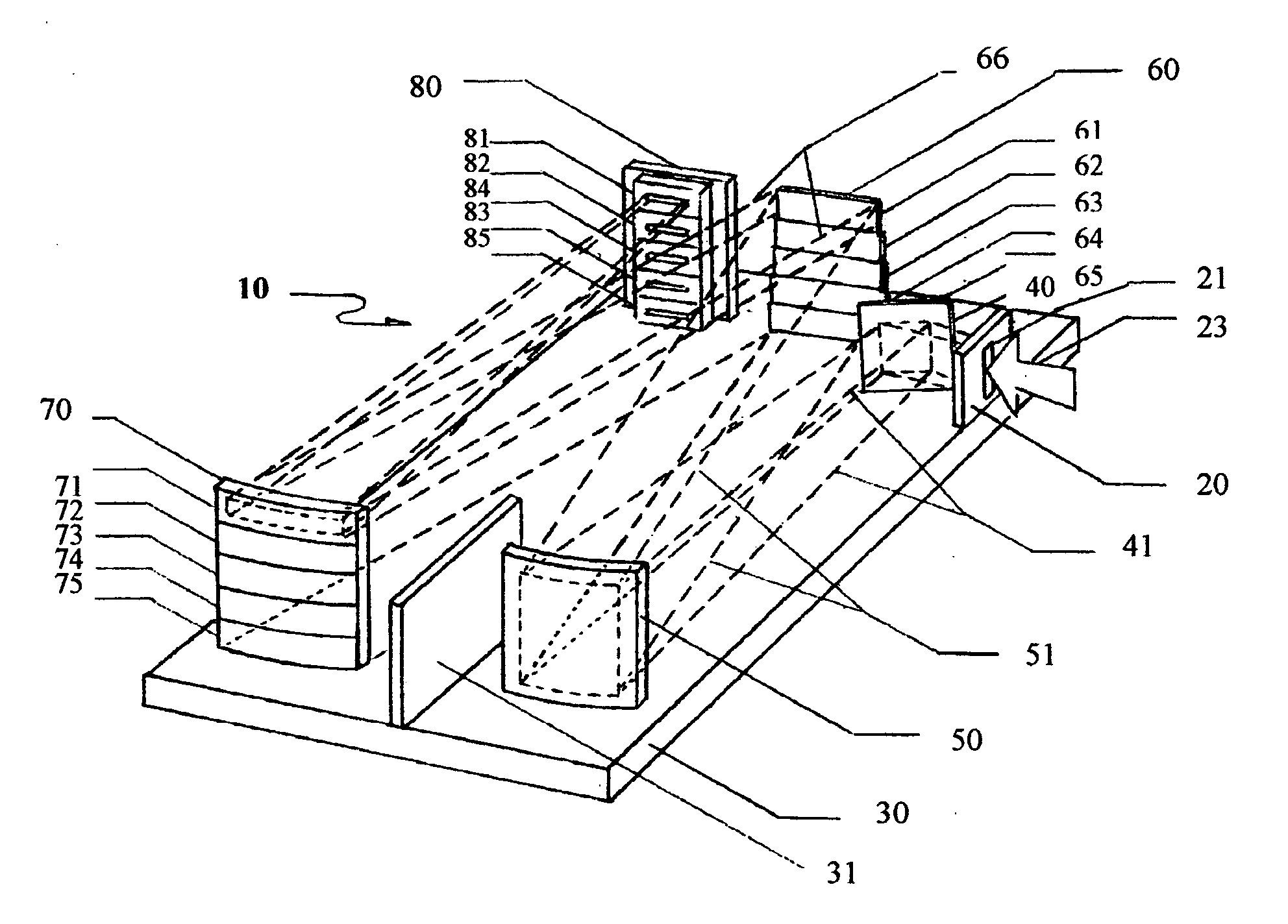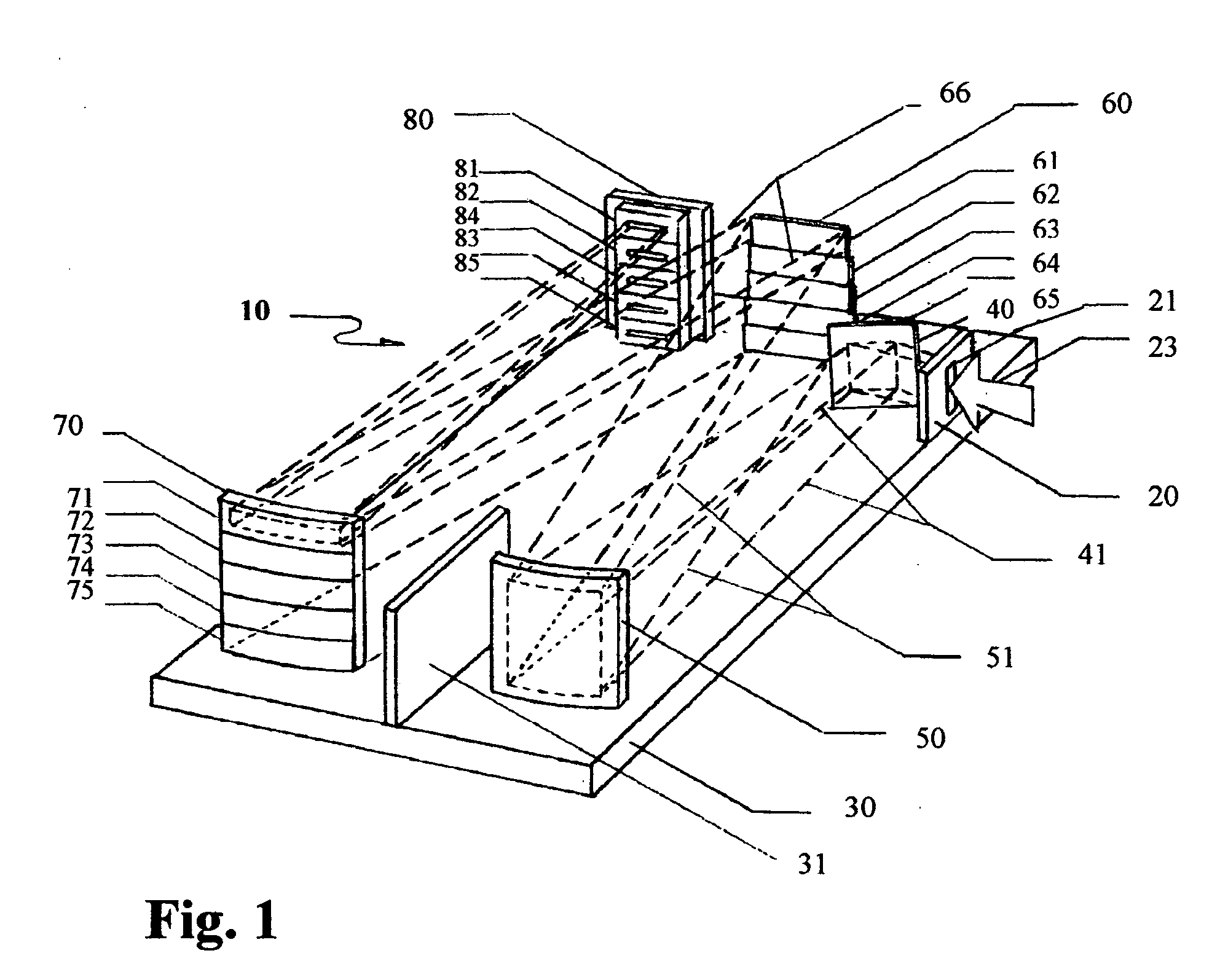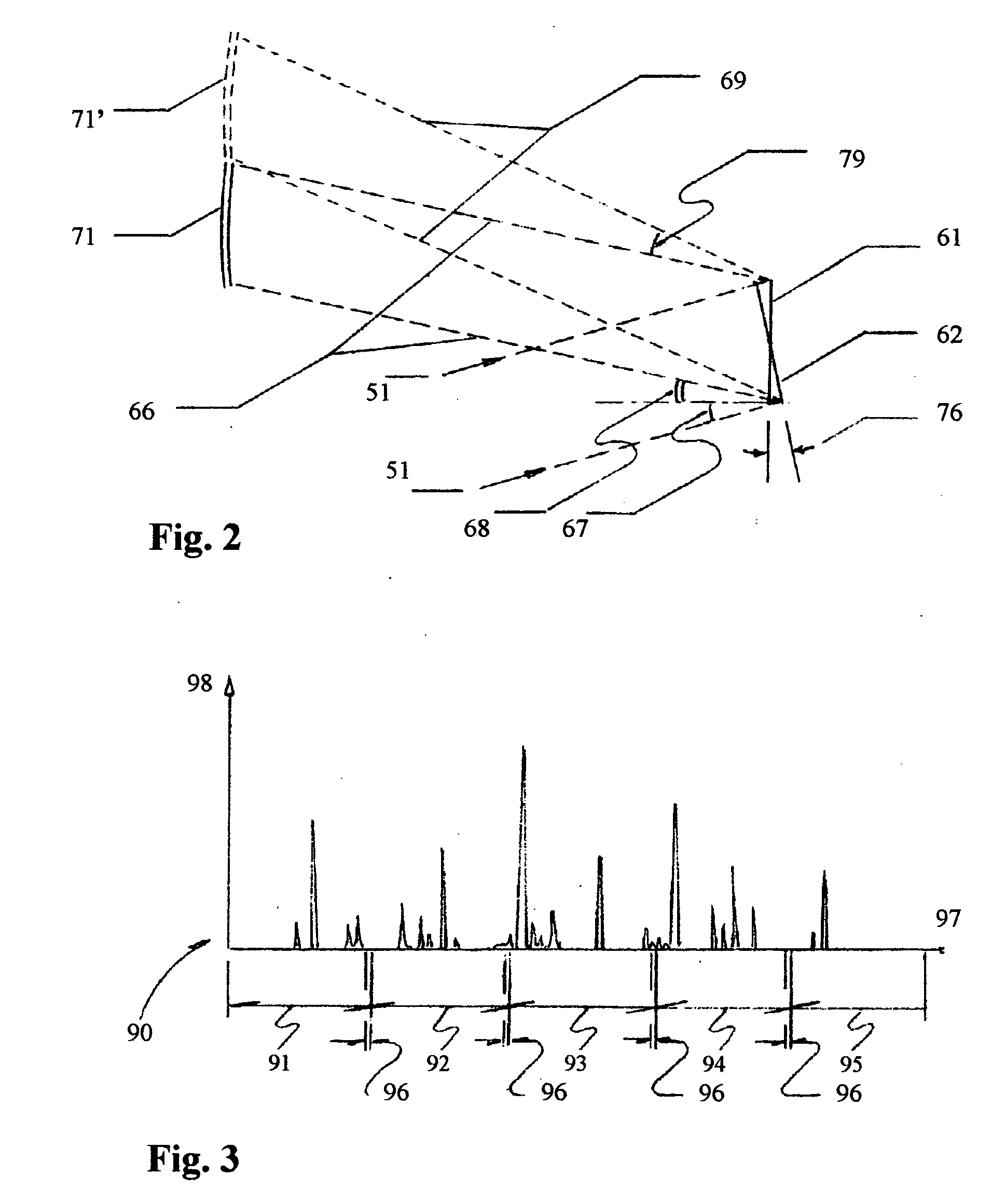Full spectral range spectrometer
a spectrometer and full spectral range technology, applied in the field of monochromators, to achieve the effects of increasing system complexity, high precision spectral analysis, and prolonging spectral acquisition tim
- Summary
- Abstract
- Description
- Claims
- Application Information
AI Technical Summary
Benefits of technology
Problems solved by technology
Method used
Image
Examples
Embodiment Construction
[0033]FIGS. 1 through 3 show the principal elements of this invention. Numeral 10 in FIG. 1 designates the monochromator designed to embody the fundamental theory and operational principles employed in this invention FIG. 2 illustrates the concept of selecting the preset angle of the grating plane to bring the offset of the full spectrum from the sub-set diffracted spectra
[0034] With reference to FIG. 1, a plate 20 with an adjustable width vertical slit 21 is mounted on the base plate 30 to allow incident optical radiation 23 to enter the monochromator and to properly position it on the reflection mirror 40. The reflected radiation 41 is directed onto a concave mirror 50 to produce optically collimated plane waves 51. A partition plate 31 is properly placed adjacent to the concave mirror 50.
[0035] As illustrated herein FIG. 1, when the collimated waves reach the array of gratings 60, they are horizontally sliced into a number of spectral subsections. The number of subsections can ...
PUM
 Login to View More
Login to View More Abstract
Description
Claims
Application Information
 Login to View More
Login to View More - R&D
- Intellectual Property
- Life Sciences
- Materials
- Tech Scout
- Unparalleled Data Quality
- Higher Quality Content
- 60% Fewer Hallucinations
Browse by: Latest US Patents, China's latest patents, Technical Efficacy Thesaurus, Application Domain, Technology Topic, Popular Technical Reports.
© 2025 PatSnap. All rights reserved.Legal|Privacy policy|Modern Slavery Act Transparency Statement|Sitemap|About US| Contact US: help@patsnap.com



